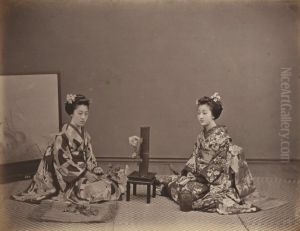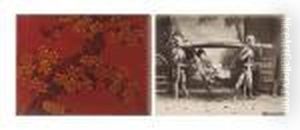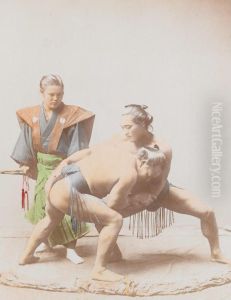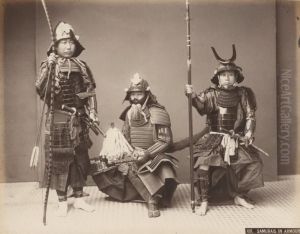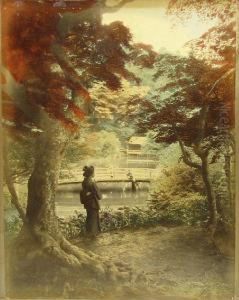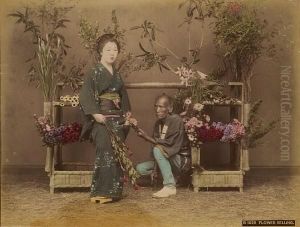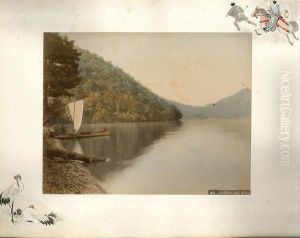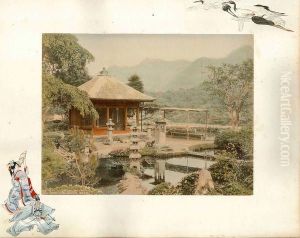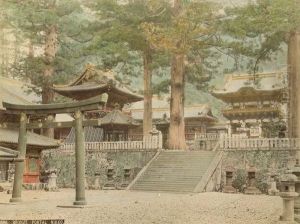Kusakabe Kimbei Paintings
Kusakabe Kimbei was a Japanese photographer renowned for his hand-colored photographs depicting Japanese culture during the Meiji period. Born in Kofu, Yamanashi, Japan in 1841, Kimbei embarked on his journey in photography by working as an assistant to the British photographer Felice Beato and the Austrian photographer Baron Raimund von Stillfried in Yokohama, Japan. Their influence was significant in shaping Kimbei's technical skills and artistic vision.
After honing his craft under these prominent Western photographers, Kimbei established his own photographic studio in Yokohama in 1881. He specialized in studio portraits and scenes of Japanese life, landscapes, and cultural activities, which were popular among foreign residents and visitors. Kimbei's photographs were often hand-colored, a meticulous process that involved adding color to black and white prints, enhancing their appeal and vibrancy.
Kimbei's work served as an important conduit between Japan and the West, as his images were among the primary means through which Western audiences gained insight into Japanese culture. His photographs were extensively collected and distributed, not only as souvenirs for tourists but also as illustrations in books about Japan. The ethnographic and artistic value of his work provided a visual record of Japan during a time of rapid modernization and change.
Kusakabe Kimbei's contributions to the art of photography and his role in documenting and interpreting his country's culture for an international audience have made him a significant figure in the history of photography. He continued to operate his studio until he retired in 1914, passing away in 1934. Today, his photographs are held in various collections worldwide, offering a precious window into the past and the cultural landscape of Meiji-era Japan.
